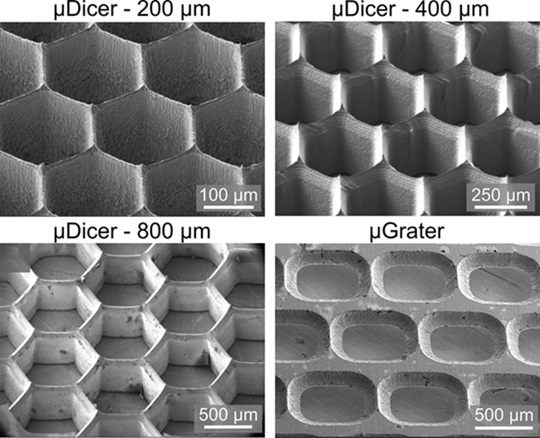New Biology Lab Tools Speed Up Tumor Dissection
Posted on 12 Sep 2024
As intriguing as working in a modern biology lab can be, much of the time, it involves repetitive, detailed tasks that need to be completed before the actual research begins. For instance, cancer researchers today can test multiple cancer therapies, including immunotherapies, on hundreds or even thousands of small, lab-grown tumor samples called organoids. However, creating organoids often requires researchers to manually mince a fresh tumor into tiny pieces using scissors, cutting the specimen into submillimeter sizes. This tedious and time-consuming task is usually carried out by highly skilled – and often overqualified – graduate students or research scientists. Fortunately, those days may be coming to an end as researchers have developed two innovative tools to streamline the precision cutting of tumor samples into submillimeter-scale organoids.
Much like kitchen gadgets used to dice vegetables or grate cheese, the microDicer (µDicer) and microGrater (µGrater), developed by scientists at the Stanford School of Engineering (Stanford, CA, USA), promise to improve both the consistency and quality of samples. This is crucial, as it directly influences the accuracy of downstream experiments, such as drug response testing. In cancer immunotherapy research, preserving the spatial relationships between tumor cells and infiltrating immune cells is key to accurately testing therapies. These new tools allow researchers to more efficiently create organoids that retain these vital cellular relationships. As detailed in the journal Microsystems & Nanoengineering, which features the study on the microDicer and microGrater, the microDicer’s blades are made using micromachining techniques from the semiconductor industry. The silicon blades are etched into a reactive plasma, forming a honeycomb-like mesh with sharp edges. Researchers use the microDicer by shaving thin tissue layers and pressing them through this honeycomb mesh, creating precise, uniform tumor samples.

In contrast, the microGrater features an array of blades shaped like rounded rectangles, each slightly longer than half a millimeter. The beveled edges of these rectangles act as blades, shaving off precise organoids as the tissue is moved across the grater. The tumors being studied are grown in lab mice, serving as a reliable model for human tumors. Ultimately, the aim is to develop personalized cancer therapies by collecting samples from individual patients and testing which immunotherapies will be most effective for them. These new tools standardize the organoid preparation process in ways manual cutting cannot, potentially speeding up regulatory approvals, such as from the FDA, for broader clinical applications.
“These new tools will speed up the manual lab work, but their utility goes beyond that obvious advantage,” said Sindy Tang, an associate professor of mechanical engineering and senior author of the study. “These tools produce uniform-sized organoids and the blades can be varied to whatever size the researcher requires.”
Related Links:
Stanford University
Stanford Medicine




 assay.jpg)








